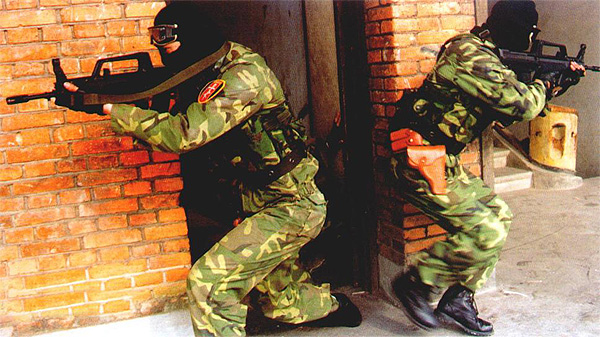

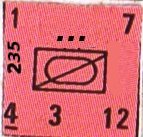
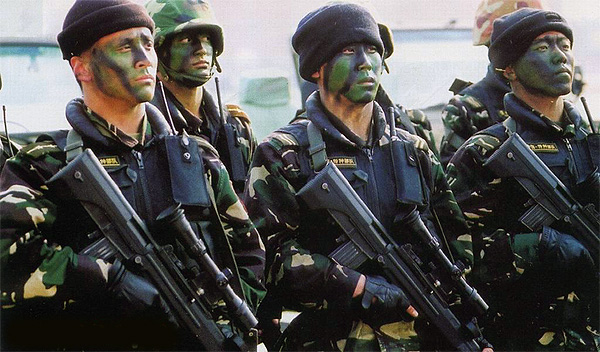
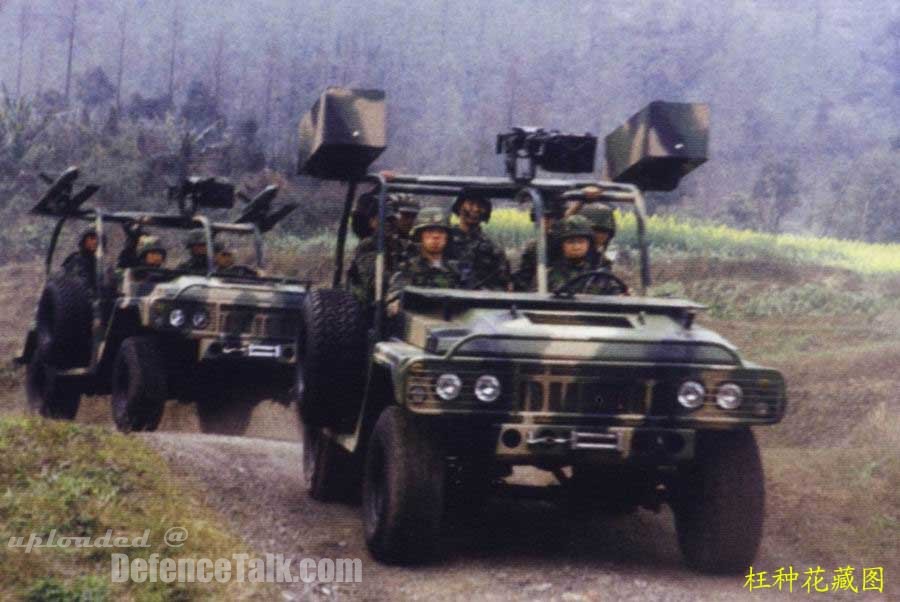
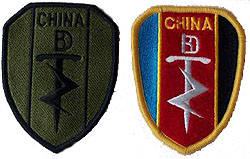
Equipments
The PLA Special Forces are generally better equipped compared to ordinary ground forces units. As well as standard military issue pistols, assault rifles, sniper rifles, and machine guns, the PLA special operations units are also equipped with special weapons and equipments such as silenced submachine gun and pistols, individual rocket launchers, grenade launchers, body armours, manpack tactical radio, night-vision goggles (NVGs), low-light cameras, handheld laser rangefinders, and GPS/GLONASS receivers. Special Forces units use fast attack vehicles (FAV) and all terrain vehicles (ATV) for land transportation. Special Forces units rely on the army aviation helicopters and air force transports to provide short- and long-range air transportations. Some Special Forces units are trained to be inserted by powered parachutes (PPC).
As well as the basic infantry weapons, the Special Forces units are also equipped with some specially designed weapons:
Roles
Special Forces units in the PLA are capable various special and unconventional warfare operations such as reconnaissance, direct action, intelligence, and counter-terrorism.
Reconnaissance - Historically the PLA put great emphasis on reconnaissance at tactical, theatre, and national level. Reconnaissance activities by day or night are often increased prior to an offensive. Reconnaissance teams are dispatched to every part of the front in order to discover avenues of approach, enemy positions (particularly enemy headquarters), and any weak points in the enemy’s deployment. Reconnaissance activities may include feints to induce the enemy to disclose his position; raids in strength to test enemy reactions; and limited attacks when the enemy’s strength is undermined.
Direct Action - Special Forces units in the PLA are capable of conducting short-duration strikes and other small-scale offensive activities behind the enemy line. Targets for these activities are likely to include enemy command posts, airfields, seaports, bridges, weapons of mass destruction, and key weapons systems such as air-defence sites, as well as certain civilian targets such as communications and power networks. By destroying or sabotaging these targets, the enemy’s ability to mobilise and command its troops is significantly reduced.
Intelligence - PLA Special Forces units work closely with the PLA’s intelligence departments to gain information of national or theatre-level significance about the enemy, weather, and terrain behind enemy lines, for example, the location of enemy command posts, reserves, weapons of mass destruction, key weapons systems, logistic sites, possible river-crossing sites, avenues of approach, and targeting data for precision-guided weapon systems.
Counter-Terrorism - As
a result of the growing separatist activities in China’s remote regions
such as Xijiang and Tibet, the PLA Special Forces became increasingly
involved in the counter-terrorism role such as hostage rescuing. This
is often conducted in co-operation with the People’s Armed Police (PAP)
and local police forces. In October 2002, a PLA Special Forces unit
took part in the joint China-Tajikistan counter-terrorism exercise. A
recent report by the Chinese state media also confirmed that
counter-terrorism had been added to the basic Special Forces training
subjects under the renewed PLA doctrines.

